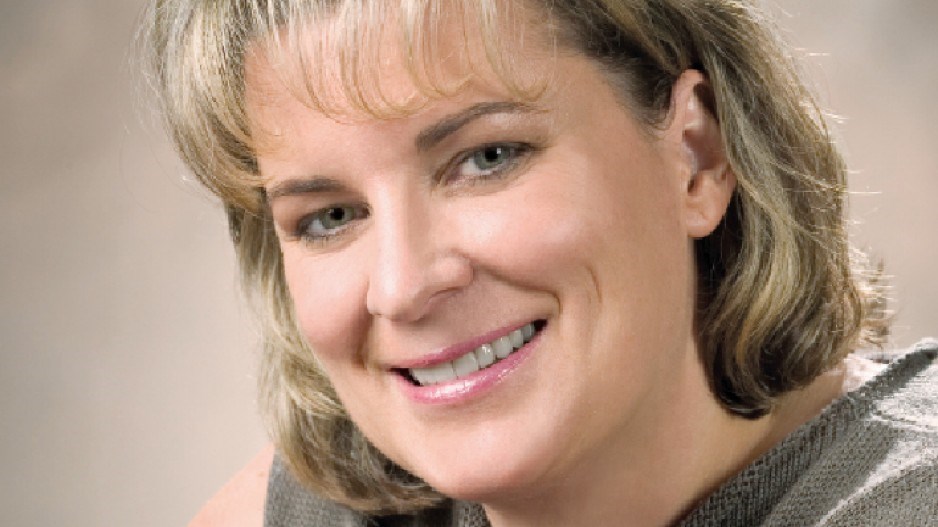The receptionist who was so aggressive that people started avoiding the reception area.
Officemates who thought another worker's phobia was funny, and showed her the object they knew would trigger a reaction.
A boss who described herself as a "straight-shooter" to explain away her sharp-tongued volleys.
These are just some of the examples of workplace bullying Cori Maedel has seen in her work as CEO of human resources consultancy Jouta Performance Group.
"We've seen bad behaviour happen, and it's often ignored," Maedel said.
She's been talking about the issue more than usual lately. That's because a new WorkSafeBC policy is about to come into effect on November 1.
Under the new rules, employers must have a procedure in place to identify bullying, assess risks and take steps to prevent bullying and harassment.
In 2012, legislation was changed to allow employees to claim workers' compensation for psychological distress resulting from their employment. Bullying can now be treated like any other workplace hazard that could result in an injury and time off work.
WorkSafeBC defines bullying and harassment as "any inappropriate conduct or comment … that the person knew or ought to have reasonably known would cause that worker to be humiliated or intimidated."
Interactions that are simply unpleasant — such as a conversation about problems with a worker's performance and how they must improve — are not included.
In order to make a WorkSafeBC claim, the employee must have received a clinical diagnosis of a mental illness such as depression or anxiety.
"Since the legislation was enacted, we have seen an increase in claims being brought forward that claim that a mental disorder has occurred," said Roberta Ellis, WorkSafeBC's vice-president of human resources.
Of those 2,842 claims, 700, or around 25%, have alleged bullying or harassment.
Those injuries can be serious.
In some cases, according to Erica Pinsky, a consultant who helps companies create respectful workplaces, they can cause such severe psychological damage that an employee can never work again.
"I've seen the actual mental trauma that can happen when individuals are on the receiving end of disrespectful behaviour," Pinsky said.
Pinsky and Maedel say WorkSafeBC's new rules are a good first step, but warn that companies that truly want to prevent bullying need to do more than follow the letter of the law.
"Bullying and harassment is everything about how you operate as a company," Maedel said, "so if it's not integrated into all your practices … it's not broad enough."
According to Pinsky, companies need to take a comprehensive look at their hiring practices, how new hires are trained and supported, whether staff are trained to recognize and deal with conflict and whether supervisors have the people skills required to manage employees.
Maedel is concerned that the policy is being instituted too quickly and sees danger if employers simply comply without doing the broader legwork to change their company culture.
She is also seeing some employers housing the policy with their safety department.
Ideally, it should be a shared responsibility between safety and human resources, said Maedel.
Pinsky added that another reason to take the issue seriously is the impact of bullying and harassment on a company's bottom line.
Ellis agreed.
"The Gordon Ramsay model isn't too healthy," she said. "It may make for good television, but what it means is that you're losing staff."
The bully and the bullied
Bullies can be found in every industry, said Erica Pinsky, a consultant and author who helps businesses create respectful work environments.
While men and women can both be bullies and bullied, men are more likely to bully men and women, while women tend to bully other women.
"There are two kinds of bullying," she said. "The first one is public humiliation, yelling and screaming, taking credit for someone else's work – we tend to see that more with men."
"With women, it's more covert relationship bullying. That's challenging because it's harder to spot."
WorkSafeBC has developed resources and guides for workers, supervisors and employers, as well as a guide specifically for small businesses. For more information, visit worksafebc.com.
What are the duties of employers when it comes to bullying in the workplace?
Employers have broad responsibilities to develop policies and procedures to prevent and respond to bullying and harassment, and to provide training and information distinguishing appropriate from inappropriate behaviour.
Specific reasonable steps for employers include:
•Employer policy statement that workplace bullying and harassment are unacceptable and will not be tolerated.
•Steps to prevent, or at least minimize, workplace bullying and harassment.
•Worker reporting and complaint procedures, including special procedures if a supervisor or other person with authority is the alleged bully/harasser.
•Procedures for dealing with incidents and complaints, including investigation procedures, investigation reporting and appropriate employer followup, and record keeping.
•Worker information on the policy statement and preventive measures.
Supervisor and worker training on:
•Recognizing the potential for bullying and harassment.
•Responding to bullying and harassment.
•Procedures for reporting, and for employer response.
•Annual review of the policy and all procedures.
•Employer's own compliance with the policy and all procedures.




